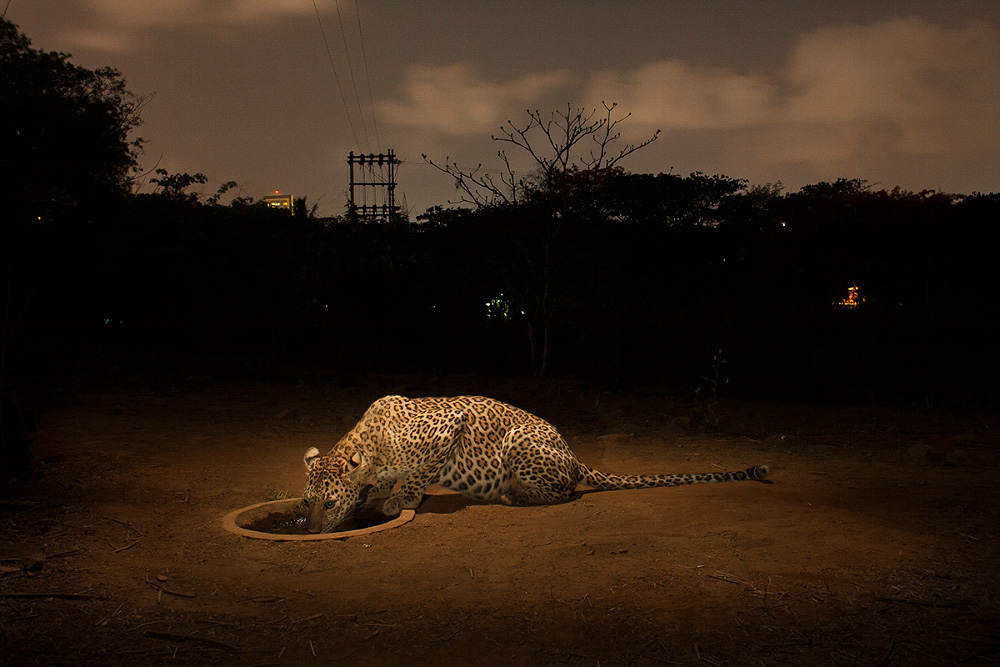 "
"
Nayan Khanolkar first chanced upon Luna the leopardess in 2014 while monitoring the man-animal conflict in Mumbai. Back then she was an almost grown up leopard cub roaming in Aarey Colony with her mother. Over the years he and his team have trailed Luna and watched her become an adult, independent leopardess having grown and thrived in an urban landscape. She learnt and understood the human ways enough to manoeuvre around them.
She knew that where humans roamed during the day, was her home at night and moved about very silently. A small man-made waterhole was her source of drinking water, and stray dogs and pigs attracted to undisposed garbage, her kill. She co-existed with her human neighbours peacefully and civilly. This was mainly due to the fact that they were unaware of her presence in the greenery surrounding their houses. As strange as it may be, the urban landscape became her ecosystem.
Now she has adapted so fully to urban civilization that the urban jungle has become her forest. Thus on being considered a threat by most, if the authorities were to displace and release her into the wilderness, she would not survive mainly due to her inability to hunt agile, wild herbivores. Luna’s nook is the urban space and she rests in it without disturbing its human occupants.
Even though Luna is living proof of the coexistence between leopards and man in urban spaces, rare conflicts endangering these animals do occur. Many well-adapted leopards are put into enclosures, or in worse scenarios, are caught in traps laid for other animals. In addition to Luna’s story, Nayan’s ongoing initiative involving leopard tracking and camera-trapping exercises outside Sanjay Gandhi National Park, unearthed the tragic demise of Chandni, a lame leopardess ensnared in Aarey Colony. She died in March this year, leaving behind her young one.
Luna too has bred successfully and has brought up her cubs to adapt and advance in the humdrum of urban landscapes, with humans and all.
CI volunteer Urvashi Bachani helped edit this article for Conservation India.

 CI is a non-profit, non-commercial portal that aims to facilitate wildlife and nature conservation by providing reliable information and the tools needed to campaign effectively.
CI is a non-profit, non-commercial portal that aims to facilitate wildlife and nature conservation by providing reliable information and the tools needed to campaign effectively.



Chosen as 'Picture of the Week'
Even though Luna is living proof of the coexistence between leopards and man in urban spaces, rare conflicts endangering these animals do occur. Many well-adapted leopards are put into enclosures, or in worse scenarios, are caught in traps laid for other animals.